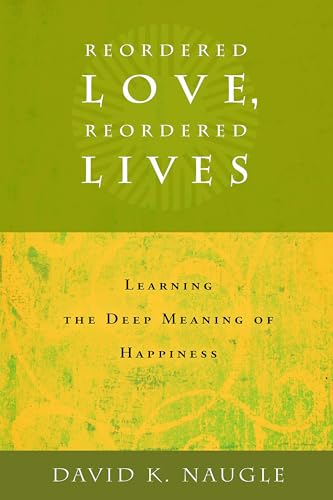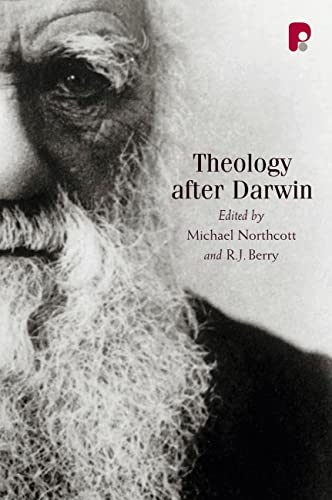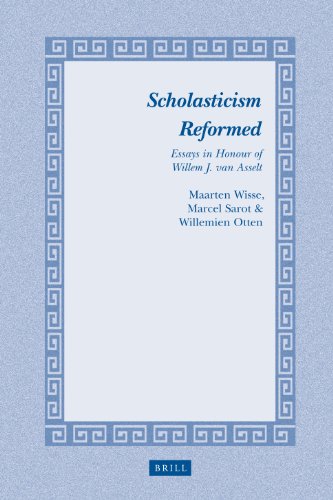R. C. Sproul’s John is the second commentary in the St. Andrews Expositional Commentary series. The commentaries in this series represent the preaching of Sproul as Minister of Preaching and Teaching at St. Andrew’s Chapel, Sanford, Florida. The series comes as a modern companion to the cache of Reformed expositions available to students of Scripture.
The second St. Andrew’s volume has many items to commend it. First, the work is warm and pastoral at many points. A shepherd’s heart is revealed throughout the expositions. Jokes and many personal stories of common interests invite the reader to consider his or her own relatedness to the text.
The use of Greek terms occurs more sparingly than one comes to expect in an evangelical exposition of NT materials. This is welcomed, as the reader is not given the impression that displaying one’s knowledge of exegesis, as a pastor, is as important as explaining the text in familiar and understandable terms. Sproul follows Calvin’s model of giving simple expositions rather than flaunting knowledge for knowledge’s (or pride’s) sake, and by doing so he sets a good example for fellow expositors to follow. Also, Sproul periodically confronts the reader for a response to the text with the heart of an evangelist: “I pray that you will hear the word of Christ to this woman, and that before you put your head on your pillow tonight that you will say to Him, ‘Give me a drink’ ” (p. 60). Often with great shepherd-like compassion toward those suffering, illustrations abound from the author’s personal experiences of his encounters with those in pain. His tone is very encouraging in the chapters reflecting the Upper Room Discourse.
Second, in the commentary large amounts of systematic and historical theology are included in the expositions. This is probably the greatest strength of this work. There are references to Luther’s trial at Worms (p. 9), predestination and the teachings of Arminianism and semi-Pelagianism (p. 116), Unitarianism and the Heidelberg Catechism (p. 298), and the author uses many Latin theological terms. In one sermon alone (John 5:16–30), the author introduces deism, naturalism, New Age beliefs, rabbinical (first century) Sabbath laws, ontological and economic Trinity, and ontology—all of these while establishing both God’s direct involvement in the creation and the deity of Christ. These are typical things we come to expect of the author—a professor of historical theology and professed lover of Reformed theology.
The strong theology is supported especially by affirming the text’s inerrancy and criticizing the views of liberal higher-critical scholars. Again, this is not shocking, for guarding inerrancy has been a drumbeat of Sproul’s since a time prior to his role on the International Council on Biblical Inerrancy. What is amazing is how often he is able to affirm inerrancy and redress criticisms of the text as he preaches through the Gospel of John. He will establish the veracity of the cleansing of the Temple (p. 26), explain the science of textual criticism while discussing John 5:3–4, and give a lengthy retort to nineteenth-century scholarly criticism of the miracle of the feeding of the 5,000, explaining both textual transmission and variants in the same series of comments (pp. 103–5). Importantly, in one exposition he explains his love for the truth of inerrancy: “If you take away the Word, you take away my life. I have nothing left, because this is the Word of Christ” (p. 279).
Third, one can discern that biblical theology and observation of intertextuality is important to Sproul. Good examples are Sproul’s discussion of Jesus’ mother Mary and the term “Woman” (pp. 368, 386) and his discussion of “fires made of coal” in John 18 and 21 (p. 401). The biblical theology is supported by thorough historical and cultural background research related to each passage under examination. The story of Christ and the message of the gospel, which are drawn out in every chapter, are grounded in both theology and history for Sproul.
As no post-apostolic sermons are perfect, so no commentaries made from sermons are perfect. In brief criticism, four drawbacks of this commentary are noted, but one should not consider these drawbacks to be applicable to the entire St. Andrews series. First, the great majority of the expositions do not reflect the unity of thought intended by the Apostle John. In this way these pages are not truly expositions of the central idea of a passage. However, there are exceptions, such as the exposition of John 5:31–47, which is centered around the “four witnesses” to the deity of Christ (pp. 91–97), and the exposition of John 11:45–12:8, which is unified around the pragmatic skepticism of the Jewish leadership (pp. 213–20). In similar criticism, occasionally the author recognizes the unifying idea, but it is not reflected in the exposition, as is the case with “[fulfilling an] empty life” as an idea in John 6:16–34 without the passage being explained by this rubric.
Second, because of the rich systematic and historical theology emphases, the theology discussion can draw away from the expositions of the passages. This is not to suggest that expositions should not be rich in doctrine. Instead, it recognizes that expositions of Scripture should explain terms and unifying concepts of a passage more than they should take detours on the history of doctrine or a systematic topic. Two examples of several detours in this commentary include the discussion on worship that draws away from the exposition of John 4:16–42 and the discussion on deistic and naturalistic beliefs in the discourse on 5:17–30.
Occasionally, the pattern of detour leads to an imbalance of emphases in the expositions. For example, on John 1:19–29, Sproul writes, “God promised that someday the King’s highway would be built and the King would enter into the midst of His people” (p. 11). But he does not explain that the Baptizer’s highway to God is repentance. In a similar manner, the chapter on John 3:14–21 is given to lengthy discussion on 3:16, but this is to the minimization of the exposition of the rest of this pericope. The reader would do well, however, to remember that this commentary derives its content from sermonic expositions, for emphases in sermons vary from preacher to preacher. Therefore the content, expectedly, is different from that of an exegetical commentary; imbalance is germane to this genre.
Third, the author speaks with certainty on items of controversial interpretive or textual discussion without giving good support for his view of the issues. One example that stands uniquely and unexpectedly is the conclusion that the story of John 7:53–8:11 “is nothing less than the very word of God” (p. 149). One might ask about the basis of Sproul’s trust of this text or why his discussion juxtaposes the “overwhelming consensus” of scholastic testimony of apostolic authority against the manuscript evidence. That is, if the majority of scholars would say that John 7:53–8:11 is inauthentic, would this be the basis for rejecting this text? Sproul’s explanation sounds much like the critical method of the liberal scholars he opposes. Yet this reviewer is confident that the great defender of inerrancy did not mean for his explanation to sound like this.
Fourth, there are other various items the reader might find surprising, such as a personal testimony about tithing that seems to lack a concept of grace (pp. 171–72). Sproul also repeats an old error of contrasting dispensationalism with Calvinism instead of covenant theology (p. 316). For this reviewer, in particular, it was most shocking to see that an illustrative question concerning those outside of the revelation of Christ is framed and answered in terms of the colonial worldview: “The theological question I hear most often is this: ‘What happens to the innocent native in Africa who has never heard the Gospel?’ ” I would recommend that the editors of the series consider how such illustrations, which might not be controversial to Sproul’s congregation, might sound to readers of a commentary.
Despite these detractions, Sproul’s John is a welcomed addition of expositions of the Gospel of John in the tradition of Calvin’s preaching style and Calvinistic theology. This reviewer enjoyed using the commentary devotionally and in preparation for sermons. Blessed is the congregation that receives such exposition and pastoral care Sunday to Sunday. Blessed will be those who utilize Sproul’s John as they read the words of life in the Fourth Gospel.
Eric C. Redmond
Eric C. Redmond (Ph.D. candidate, Capital Seminary and Graduate School) is assistant professor of Bible at Moody Bible Institute, Chicago, IL, and associate pastor of adult ministries at Calvary Memorial Church, Oak Park, IL.
Other Articles in this Issue
Most of us, I suspect, develop fairly standard ways, one might even say repetitive ways, to appeal to the motivations of our hearers when we preach the gospel...
How to Write—and How Not to Write—A Review: An Appreciative Response to Reviews of Ancient Near Eastern Themes in Biblical Theology by Dempster and Edgar
by Jeffrey J. NiehausI want to thank Themelios for the unusual opportunity to interact with two reviewers of my book Ancient Near Eastern Themes in Biblical Theology...
Parallels, Real or Imagined? A Review Article of Jeffrey J. Niehaus, Ancient Near Eastern Themes in Biblical Theology
by William EdgarWhen I came to Westminster Theological Seminary in Philadelphia as a young student in the 1960s, two things struck me...
Why Evangelicals Should Ignore Brian McLaren: How the New Testament Requires Evangelicals to Render a Judgment on the Moral Status of Homosexuality
by Denny BurkIn 2006 on Christianity Today’s leadership blog, Pastor Brian McLaren urged evangelical leaders to find a “Pastoral Response” to their parishioners on the issue of homosexuality...
A Member of the Family or a Stranger? A Review Article of Jeffrey J. Niehaus, Ancient Near Eastern
by Stephen DempsterWe cannot overstate how important knowing the context is for understanding the significance of any communication, whether that is a simple word, sentence, paragraph, larger text, sign, photograph, or cultural cue...







